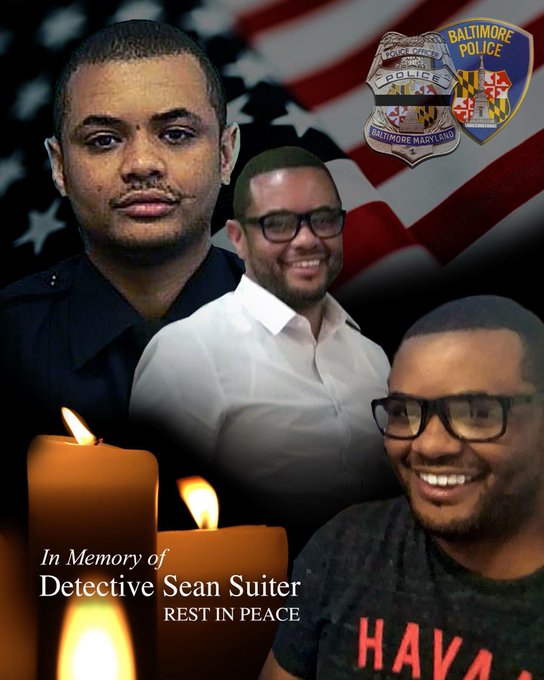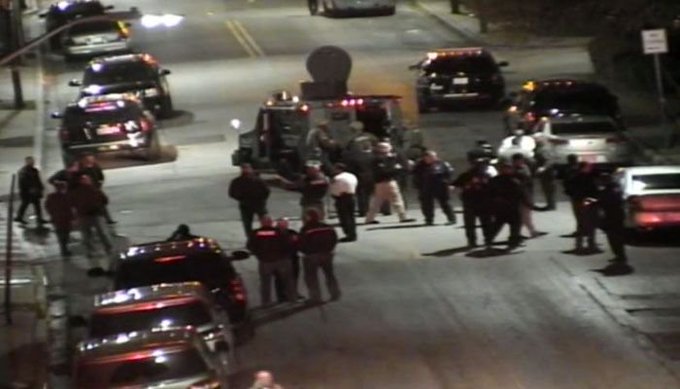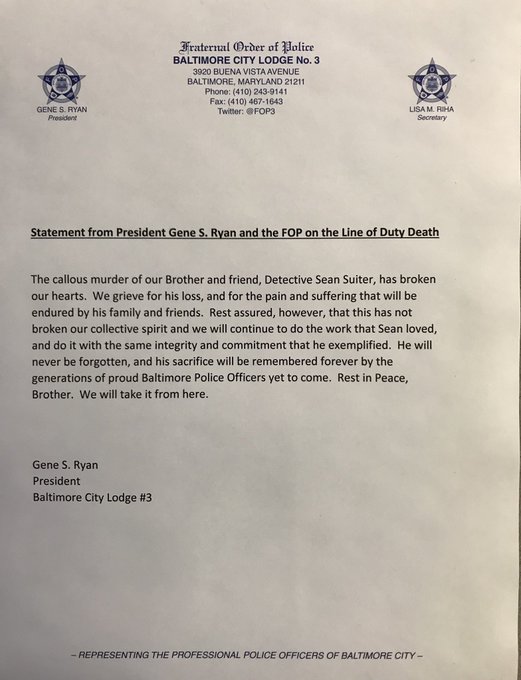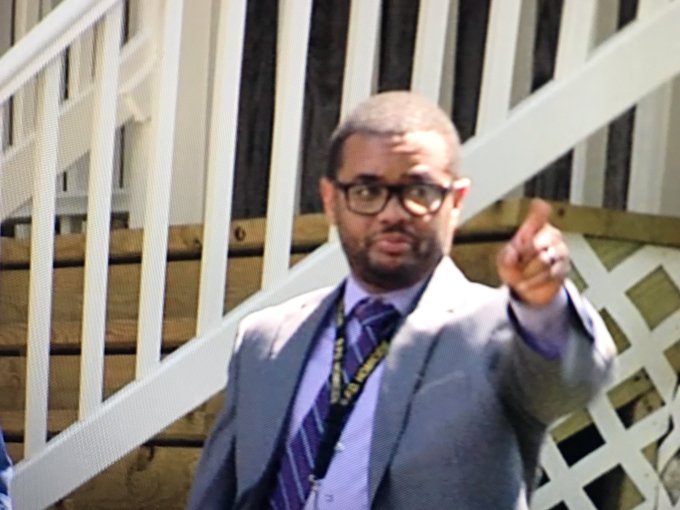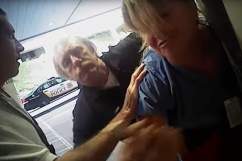https://twitter.com/TashawnaGaines/status/931245659952439296
The Baltimore Police Department has been left to grieve as one of its officers was shot and killed in the line of duty.
Law enforcement officials said that Baltimore Police Homicide Detective Sean Suiter, 43, was shot in the head by suspect during a confrontation November 15. Suiter was dressed in his official uniform when he made contact with an individual who was exhibiting suspicious behavior while he was conducting a homicide investigation. As he approached, the unidentified man wielded a handgun and fired at least one shot at Suiter, which struck him in the head.
Suiter is a United States Navy veteran and had been with the Baltimore Police Department for the past 18 years. He’s survived by his five children and his wife. Baltimore Police Commissioner Kevin Davis said at a November 22 briefing that Suiter was scheduled to testify before a federal grand jury a case involving several indicted officers the day after the shooting. He also clarified that Suiter was killed with his own service weapon, adding that there was evidence of a struggle.
“The BPD and FBI do not possess any information that this incident … is part of any conspiracy,” Davis told reporters.
Here’s what you need to know about Suiter and the shooting incident:
1. Suiter Was Shot in the Head While Conducting a Homicide Investigation
Baltimore Police Commissioner Kevin Davis said at a news conference that Suiter was conducting a follow-up to a 2016 homicide investigation with a partner around 5 p.m. local time November 15 in notoriously violent area of West Baltimore. As he arrived on scene, which is an vacant, open space, Suiter and his partner reportedly split up to cover the area. At some point, Suiter witnessed a man who he saw engaging in “suspicious activity,” Davis said. As Suiter approached the man, he tried to engage in conversation and was suddenly shot in the head, falling to the ground.

The 900 block of Bennett Place in West Baltimore, where the shooting took place. Vacant homes can be seen in this 2014 photo. They have since been leveled and the area sits as an open space.
Davis said there private surveillance video which shows Suiter’s partner running to cover as gunfire erupted.
Suiter was rushed to the Maryland Medical Center hospital in a patrol car, but on the way, the vehicle was struck by another vehicle. He was removed from the vehicle and was transported by another vehicle to the medical facility.
Suiter was placed on life support and was initially in “very, very grave condition.” Less than 24 hours later, Davis said at a press conference that Suiter died from his injuries.
2. The Suspect in the Shooting Remains at Large
The suspect who shot Suiter is still at large, and officers have been canvassing the area looking for him. Davis described the suspect as being “cold” and “callous,” saying a manhunt has been launched to locate him. There is evidence that the suspect “may have been wounded” by return fire from the officers, Davis added.
“The individual responsible for this heinous crime will be found, charged, and prosecuted to the fullest extent of the law,” Maryland Gov. Larry Hogan tweeted. “The Baltimore Police Department has our full support as they track down this violent criminal and bring him to justice.”
Hogan also ordered flags across the state to be at half mast in honor of Suiter.
Officials said that a $215,000 reward has been offered for information leading to the arrest of the suspect. Anyone with information regarding the incident is urged to contact the Baltimore FBI office at 1-800-CALL-FBI or police detectives at (410) 396-2100. Tips are also encouraged to be called into Metro Crime Stoppers at 1-866-7-LOCK-UP and can also be texted anonymously to (443) 902-4824.
Hours after Suiter’s death was announced, Hogan said that the state of Maryland is also offering a $100,000 reward for information that leads to the arrest and conviction of the killer.
“I don’t know if anyone is helping to hide this suspect, my best hunch is that more than one or two people know or suspect that our killer was involved in this yesterday,” Davis said. “We’re asking those folks to do some soul searching and pick up the phone and give us a call. We’re asking this shooter to do the right thing. He knows what he did, he knows he shot and killed a cop. Do the right thing. Call 911, go to a hospital, go to a church, go anywhere, turn yourself in.”
So far, there have been 308 homicides in Baltimore, which is the third-straight year of over than 300 murders.
3. Suiter Had a Long History With the Police Department
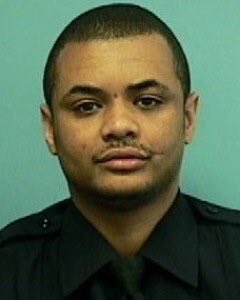
Detective Sean Suiter
Suiter spent the last 18 years with the Baltimore Police Department and loved every second of it, his colleagues said. Prior to working as a homicide detective, Suiter served for many years in the city’s western district, working alongside several officers who became detectives with him. In addition to that service, he also worked in several specialty operation units and held several accommodations. A database of city employees says Suiter was hired on August 18, 1999 and received an annual salary of almost $73,000 in 2015.
Police officials announced Suiter’s death at a press conference outside the hospital. He was familiar with many doctors and nurses at the hospital, who also expressed their condolences.
“Like any Baltimore detective, he interacts with the staffs of more than one hospital,” Davis said. “He’s been here investigating many cases over the years and has gotten to know the doctors.”
In a statement from the Baltimore City Lodge No. 3, President Gene S. Ryan expressed his condolences.
“We grieve for his loss, and for the pain and suffering that will be endured by his family and friends,” Ryan said. “Rest assured, however, that this has not broken our collective spirit and we will continue to do the work that Sean loved, and do it with the same integrity and commitment that he exemplified.”
4. Suiter Was the Father of 5 Children
Officials said Suiter was born and raised in Washington D.C. and met his wife, Nicole, in Baltimore. He lived in Conewago Township, Pennsylvania with his five children: Sean, Zaria, Marquis, Chris and Demyra. Their ages range from 14 to 24, and they were all at the hospital with him as he passed away.
“(The family) is here surrounding Sean, loving Sean as the Baltimore Police Department has been here constantly since this very tragic event,” Davis said.
Baltimore Mayor Catherine Pugh asked for prayers for the Suiter family and his colleagues.
“When they leave their homes, their families’ hearts go out with them,” Pugh said at a press conference. “Every life lost to violence or any other issue is a life lost to Baltimore City.”
Pugh described Suiter as a well-liked person. He was a former Navy officer who “loved being a cop,” Davis said.
Pugh said Suiter’s family members traveled from as far away as Florida to be at his side.
“They’re all suffering,” Pugh said. “They’ve got a lot of relatives here, cousins, in-laws, families who have traveled as far as Florida to be here with them. So we embrace them and hold them up and just do as we can to make these moments as comfortable as we can because nobody can understand pain unless you suffer it yourself.”
5. Suiter’s Death is the 2nd Law Enforcement Death in West Baltimore in November & the 1st Baltimore Police Death Since 2011
Suiter’s death was the second of a law enforcement officer in West Baltimore in November 2017. On November 4, District of Columbia police officer Sgt. Tony Anthony Mason Jr., 40, was shot to death. He lived in Baltimore and was off duty at the time when the shooting incident took place. A reward of $20,000 has been offered by the Bureau of Alcohol, Tobacco, Firearms and Explosives for information leading to the arrest of the suspect.
The shooting also marks the first death of a Baltimore Police officer in the line of duty since 2011. Officer William Torbit Jr., who was working in plain clothes, was killed by friendly fire when he responded to a melee outside of Select Lounge club. Torbit was assisting with crowd control when he got into an altercation with a man.
Police said that Torbit was “overtaken by the crowd” and opened fire with his weapon, killing a man. Other officers on scene didn’t realize who Torbit was and fired back, killing him. His death prompted changes within the Baltimore Police Department, included requiring officers dressed in plain clothes to wear vests that identify them as police officers.
The families of Torbit and Gamble filed civil suits against the police department, but they were dismissed by a judge after a five-week trial in 2013.
